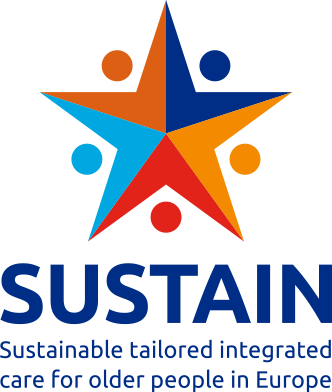Pioneering a SUSTAIN format to facilitate learning across sites, in Germany, the RMZ Templin team had the opportunity to visit Careworks Berlin’s facilities, exchange views and explore transferability of a case management approach based on therapists, called pilot therapy.
An exchange between project sites: How care improves with teams and trust
Author: Sophia Schlette, MPH - Stiftung Gesundheit
In the current legislature, Germany has seen a battery of reform legislation addressing all aspects of long-term care: the nursing profession, their role in care, their education, their working conditions, ADL (Activities of Daily Living) and other categories that determine a person’s eligibility for LTC (Long-term Care) services, as well as better tailored care for patients with specific needs, like dementia, and so on. Several studies have looked into the gaps, into gender issues, into the potential and burden of informal care. A key shift in focus is perhaps a more resourceful approach to care where rehabilitation comes before long-term care, Reha vor Pflege, as the motto goes. Prominently missing in the debate until recently: factoring in the role of therapists.
They seem worlds apart. With one site urban and one site remote-rural and a good two-hour drive between them, one in a more fragmented, one in a more integrated environment, one physician-initiated one therapist-led, the two SUSTAIN sites in Germany, Careworks Berlin (CWB) and RMZ Templin, didn’t know about each other.
Yet I soon figured that they should. Both case sites in Germany center around resource mobilization via care coordination with and around older people living at home. Both focus on individually tailored therapy approaches for seniors with complex needs. Putting patients first, both groups are pioneering with multi-professional teams and innovative skill-mixes while at the same time addressing current and projected workforce shortages.
Even with carers and managers knee-deep in their daily work, it doesn’t take long to convince both teams that an informal meeting might be insightful and inspiring both ways.
In late August the Templin project managers travel to Berlin. We meet at Blumberger Damm, a highrise complex that houses everything from assisted living to home health care to palliative care, therapists practices, a volunteer center, a nearby healthcare facility, and a pharmacy.
We’re ten minutes into the meeting and I’m not needed anymore. Jens-Peter Claußen, CWB’s managing director – or should I say – creative director? – explains how they implement high-touch, high-frequency therapy. For people in their 70s or 80s, it is vital to see their physio-, occupational, or speech therapist often, ideally five times a week, week after week. In Templin, instead, the innovative complex therapy programme gets funded for three weeks only, although everyone admits this isn’t good enough. It’s about bringing in the funders, the sickness funds. From CWB, we learn it’s about building trust across all providers along the care continuum. Doctors fear audits if they “overprescribe” therapies. But therapy referrals can be issued and still perfectly aligned with current regulatory requirements. So it’s also about education – about showing physicians how.
As for patient-centered care management -who sees the patient the most? It’s the therapists, not nurses. So why not involve therapists more actively in care planning, long-term care, even ADL activities? They’re doing it anyway. Again, trust and education are key. At Careworks Berlin, payment incentives are not an issue, as financial resources are pooled in a clever way. Therapists are employed instead of working in their own private practices. This frees them to focus on fewer patients rather than seeing many to make a living. The result? Happier staff, happier patients. And that is exactly the vibes you get when come through the door: This isn’t a miserable assisted living facility or nursing home, it is a happy place. And so the guests join the hosts for a lunch, prepared and served by the “timegiver” crew – volunteers who are another part and parcel of the CWB approach that deserves extra attention in a separate blog note.
A surprising take-away: Under current regulations, you can do more than you think. The more you communicate, the easier collaboration gets. The challenge? At the working level, teams come together to jointly develop pragmatic, sensitive solutions for pressing challenges in the care of older people. To showcase what gets already done and how, it is needed to overcome concerns at higher levels, where politicians and senior (funding) decision-makers often remain undisturbed by what is already happening.
by Sophia Schlette, MPH
Stiftung Gesundheit

